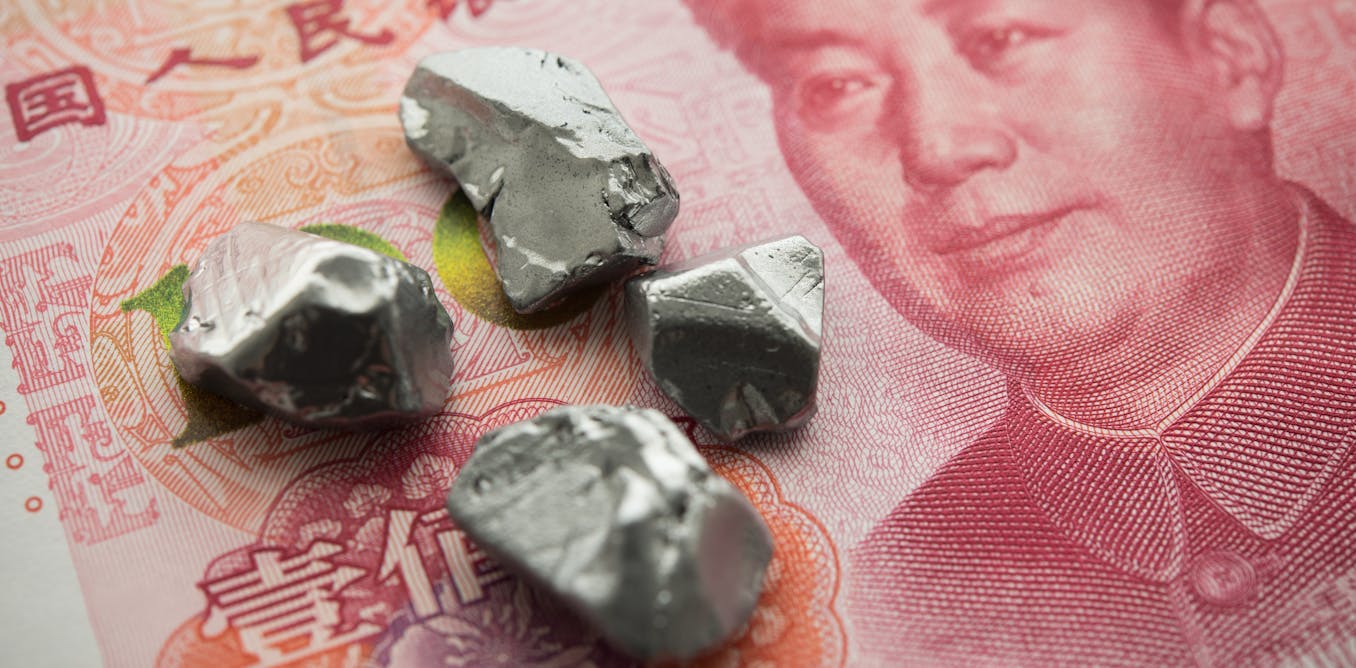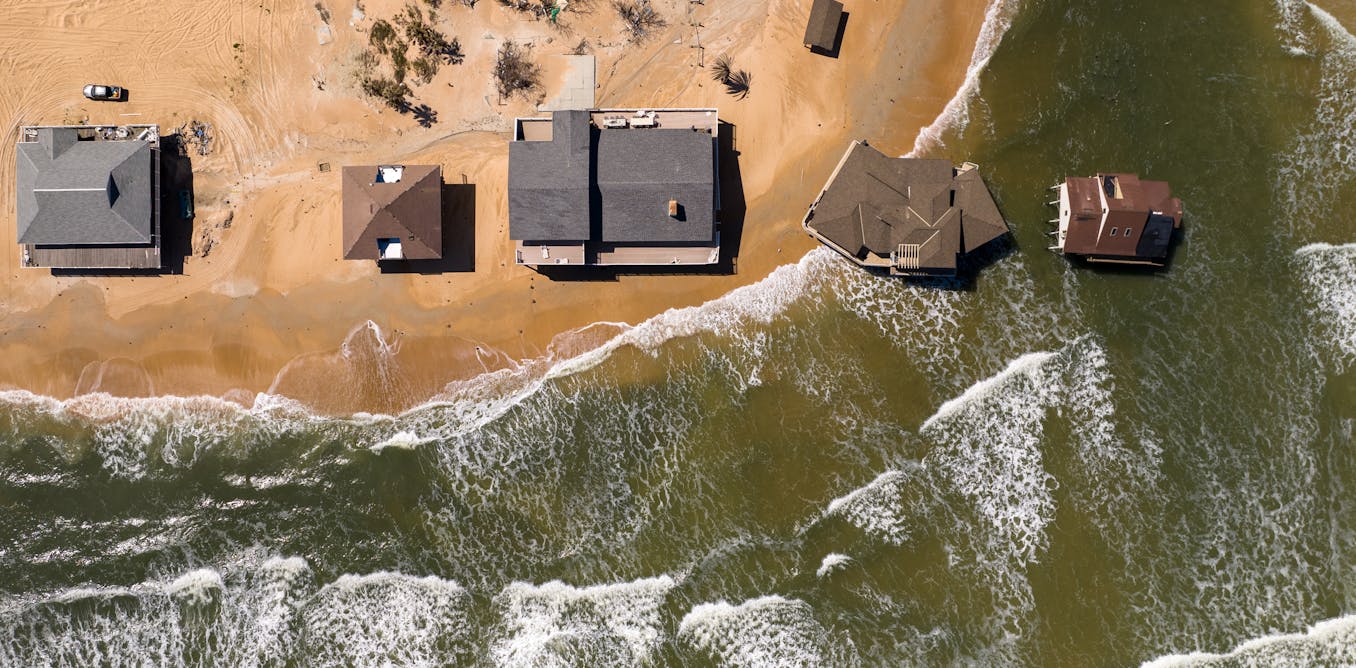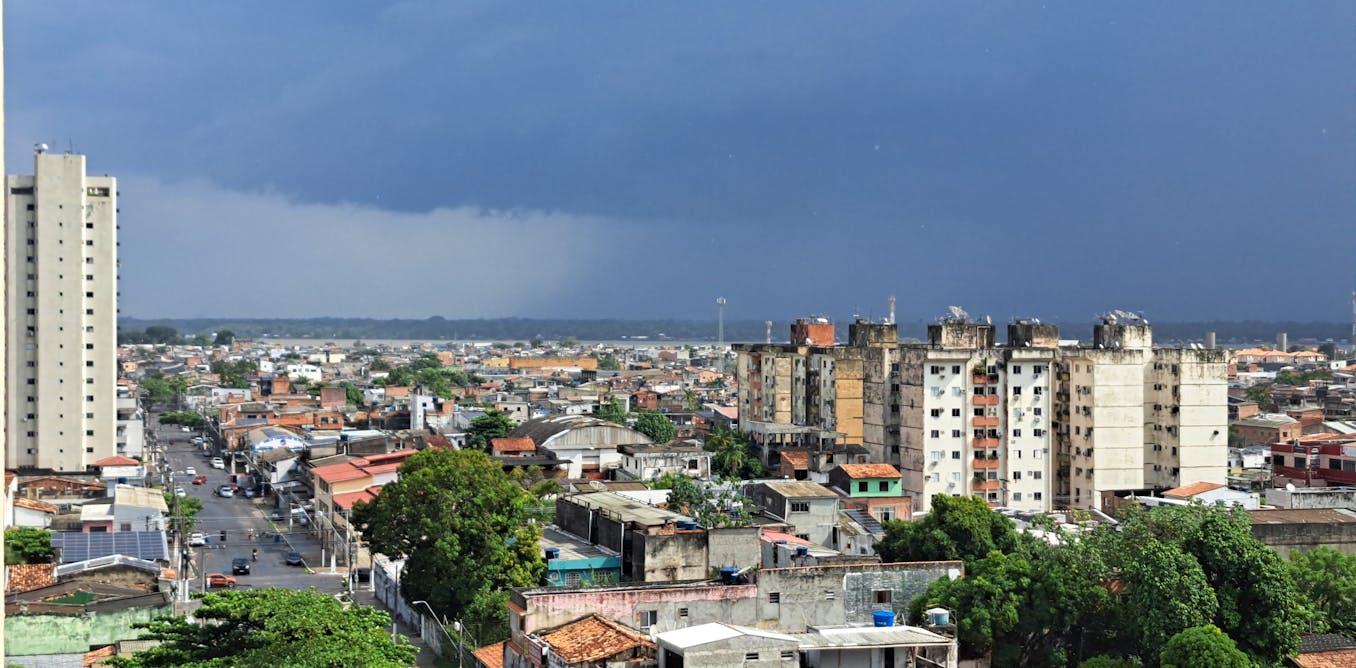Can algae save the world? | DW Documentary
Using algae to solve humanity’s most pressing problems – that’s the ambitious aim of a team of researchers from Germany. After all, algae are posessed of staggering superpowers: for example, the ability to bind CO2. Algae can also be used to make plastic substitutes and even medication.
For a research project called “Waste to value”, Kaiserslautern University of Applied Sciences biologist Michael Lakatos and his team are investigating the potential uses of microalgae. Some species form limestone, which could be used to make bio-cement – thereby reducing CO₂. Other forms of algae could serve as a biologically-based plastic substitute. Yet others could produce edible dyes – using sunlight and CO₂. The researchers are traveling the world in search of especially talented algae and bacteria.
The filmmakers accompany the team members for almost a year – even following them into a Spanish cave used to emulate life on Mars. After all, algae could have many potential uses in space, including as a foodstuff for astronauts.
#documentary #dwdocumentary
______
DW Documentary (English): https://www.youtube.com/dwdocumentary
DW Documental (Spanish): https://www.youtube.com/dwdocumental
DW Documentary وثائقية دي دبليو (Arabic): https://www.youtube.com/dwdocarabia
DW Doku (German): https://www.youtube.com/dwdoku
DW Documentary हिन्दी (Hindi): https://www.youtube.com/dwdochindi
Watch the video by DW Documentary
Hope has a color and it’s green! One German research team is convinced that algae can help solve some of humanity’s greatest problems. Around the globe, biologists are hunting for microorganisms with extraordinary abilities. Like lime-secreting algae, which might one day generate climate-neutral cement. 5% of global atmospheric CO2 comes from construction from concrete production.
Now, here’s a possible concrete substitute that’s the exact opposite. It doesn’t produce CO2, it absorbs it. For over a year, we accompanied researchers from Kaiserslautern’s University of Applied Sciences. Even to the depths of a Spanish cave, where life on Mars is being simulated. Here on Earth, or in space algae could be key.
Algae can take in waste materials and waste water and extract nutrients from it with very little light. They can also produce oxygen. They can bind the CO2 we exhale, creating oxygen and food at the same time. Algae are probably amongst the best organisms for producing food…
An expedition in northern Spain an hour’s drive from Bilbao. These researchers, led by biologist Michael Lakatos, are exploring a cave in the hopes of discovering new species of algae and furthering their research on known ones. They’re not exactly sure what awaits them. There are almost three hundred caves in this valley alone
And some four thousand in all of Cantabria. One cave in particular is of special interest to the German expedition team. What they discover here is mind-blowing. Michael Lakatos finds organisms that bear witness to the very origins of life on Earth. I’ve just found this huge patch
With one of the oldest cyanobacteria we’re aware of. It’s incredible. I’ve never seen anything like it. It’s quite incredible — I’m at a loss for words. What’s left him speechless is how these bacteria, known colloquially as blue-green algae, can survive with so little light.
On one hand we really want to discover and isolate new cyanobacteria, and use them for biotechnological applications. At the same time, though, when we’re here in such a marvelous habitat, the first question is naturally ‘how are they surviving?’ So, that’s what we’re doing here. We’re measuring photosynthesis with this device.
But we’re also seeing to what extent they’ve adapted to the light, and how they utilize it. For the algae researchers, this Cantabrian cave is a godsend. A layperson might just see a mossy-looking rock face. But for the biologists, it’s a window into a fascinating world. An extraordinary multi-generational colony.
You can see this colorful surface here these fluffy little gray-green pads. These are cyanobacteria. So are these yellow ones here. These pink, jelly-like blobs are striking. That’s the particular cyanobacterium we’re after Gloeobacter. It’s one of the oldest living cyanobacteria. So it’s a very basic, primitive cyanobacteria, that’s living here alongside more modern species
That have evolved differently. They’re all living here, in the colony. Michael Lakatos and Patrick Jung are thrilled with the wealth of research material they’ve found and excited about the new questions that arise from it. We know that they can survive without much light, but we don’t know exactly what the lower limit is.
There’s also the question of how exactly this works in the low-light situation we’ve encountered deeper inside the cave. The cyanobacteria population there is different. We found different species. So certain processes are different here. So the algae here is quite clever? Yes, they can photosynthesize in the dark.
We’ve moved even further into the cave and despite the total darkness find species of algae living here, too: Down here, only a hundred-thousandth of the light from above can reach them. They’re survival artists, in the dark. They’ve simply structured their physiology, their photosynthesis,
So that they can use not only the visible light spectrum, but and this would be hugely exciting they may also be able to draw from further along the range of light. In the red, or in the far-red. It was Spanish biologist Antonio Guillen who first drew his German colleagues’ attention to the cave,
And sent them samples. It was the beginning of a great friendship between the Spanish and German algae researchers: It opens up a new field of research. I find it very interesting in terms of the production and research of useful substances and materials. Not just the biological aspect, which is already fascinating,
But also the practical applications. In that regard, Patrick and Michael’s ideas are in line with ours. In other words: We’re happy to continue supporting them here, and we’re looking forward to working even more closely with them. The Spanish biologist works for a company that wants to model Mars missions here.
They’ve set up a space station of sorts, deep within the cave. The algae research conducted by the German team could also be interesting for missions into space: It aligns perfectly with our original plan to draw on the potential of these unexplored microorganisms. They’re all apparently capable of producing substances
That have not yet been researched. Antibiotics, for instance. These organisms are in fierce competition with each other, so they produce antibiotics. They produce nutrients that serve as food for other organisms, so they could serve as food for us. It could all be possible. A change of scene we head to the laboratory
At Kaiserslautern’s University of Applied Sciences. The Pirmasens campus is home to the world’s largest collection of terrestrial cyanobacteria algae that live on land, not in water. For study purposes, they’re being cultivated in liquid nonetheless. Over three hundred and fifty species from all over the world can be found here.
For example, here we’ve isolated Chroococcidiopsis from the Antarctic, a unicellular alga. Here we’ve isolated Microcoleus, a thread-like alga from very hot desert regions. And a completely new alga we’ve identified, from Svalbard, in the Arctic, Oculatella. What does that do? It has a small red tip, quite unusual. We don’t know why it’s there!
Researchers started the collection back in the 1950s. The algae from the Spanish cave are the latest addition and could one day help us face the climate crisis. There are some that can carbonize, for example. They behave like reef-building coral, producing a sort of chalky skeleton.
One of our new projects here is to see whether we could use this as a cement substitute. Cement that can be grown. The samples we collected are in here. The German researchers are traveling the world on the hunt for new species of algae.
They most recently spent four weeks in the Atacama Desert, in Chile. Wild… the whole spine of the cactus here are the other Trentepohlia samples. A special type of lichen that grows on the tips of the cacti there. Deserts are extreme locations. It’s very hot and there’s little water.
If the organisms can survive there, they can also withstand very high temperatures in biotechnological reactors, for example. That’s number one… and number two: In extreme habitats like that, you always find organisms that can do something very special, such as producing special active substances, or adopting specific, new metabolic pathways.
Some algae enter into a symbiosis with fungi in order to survive in extreme places, forming lichens. Patrick Jung found such an algae-fungus symbiosis in the Atacama. The fungus becomes a kind of sun shade for the algae: Among other things, it also provides UV protection
Against the harsh radiation one finds in the Atacama Desert. The algae are not mobile, they’re trapped in a stationary position, and somehow have to protect themselves from the sun’s rays, which they cannot avoid. With a lichen like this one, that task falls to the fungal partner.
It produces certain pigments in the case of this species, those pigments are greenish-yellow in appearance. Another key feature, the colony survives on very little water. These are all properties that could come in very handy. Say, in the development of new products. How could we turn organic waste into plastics?
Early March, 2022: The official launch of a research project called Waste2value. The vision: at some point, algae will be grown directly on building facades and residents could benefit from the harvest. If bioplastics were able to thrive on such facades, it could also lead to growth in regional economies. All thanks to algae.
Green fuels could also be created, using the same methods. Research is funded by the German federal state of Rhineland-Palatinate. They see it as an investment in the future. On the state level, many companies would benefit from becoming a little less dependent on energy suppliers. That’s a significant consideration, these days.
We’d also be making a contribution to climate protection, from here in Rhineland-Palatinate. The German Federal Ministry of Education and Research is also funding the project. They’ve granted eight million euros for the first three years. Several partners are working with the team from Pirmasens. We’re currently enjoying an initial spark of interest.
We’re hoping to progress as far as possible with the companies, ultimately implementing some of the ideas we’ve been researching for years. Yes wonderful — just great. The two researchers are unpacking a new piece of equipment: A photo-bio-reactor. It will allow them to grow algae that normally live on land,
In liquid and thereby control the way they reproduce. They don’t grow as well, but they grow in a controlled manner, and on a large scale. We can then control their growth here, in a kind of pre-culture, then transfer them into larger reactors. Soon, an algae that’s popular with biologists
Will be growing in this reactor. So this, for example, is the ‘lab rat’ for bio-technologists working with algae. This is Synecocystis it’s used quite frequently and copes ideally in conditions like this. What you see here, for example, are the terrestrial algae we work with Nostoc muscorum. They’re multicellular and thread-like.
You can see immediately that they tend to clump together. You have to prevent that with this mixing process. We’re curious to see how this algae grows in there we have no experience with it yet. You haven’t tried yet? There it clumps up. What it’ll do in here, we don’t even know yet.
We’re curious! The CO2 comes in here, and the bubbles have to go up here… The reactor is an important intermediate step towards producing larger quantities of bioplastics or climate friendly cement, one day. There’s a big difference between trying to force nature into the lab
That’s to say, conducting experiments on a small, laboratory scale and being able to think on a larger industrial scale. That’s a whole other ballpark. That took the longest, all these connections… Modules the size of a window. The researchers have already commissioned them. The idea is to grow algae on facades inside these photo-bioreactors.
If it works, the process could save a lot of waste and CO2. There are other benefits, as well. Some algae produce natural dyes. Some could end up on our plates: Now, we have solar systems on the roof. In future we could also cover the east and west facades with these algae reactors.
Then either the collectors would regularly come by to harvest them, or we’d harvest it ourselves for food. The new lab for the reactor Yes, wow! A lot of research is still required, though. Space, too: The new research reactor will soon be housed in this former changing room.
We’ll be back for a visit once the researchers have filled it with algae. For now, it’s back to Spain. Michael Lakatos and his Spanish colleague have descended deep into the cave — and reached the Mars station. The aim here is to replicate living conditions on the Red Planet as realistically as possible.
One day, algae might be able to help space pioneers survive on Mars. Cyanobacteria can take in waste materials and waste water and extract their nutrients from it — with very little light, like we have here. They then can produce oxygen. They can bind the CO2 we exhale, too,
Creating oxygen and food at the same time. Algae are probably among the best organisms for producing food in space. With the test station in the Spanish cave, the company hopes to approximate life on Mars even if some Martian conditions are impossible to reproduce. We can’t reduce gravity
We need to take the analogue aspects into account. The real thing would be to actually be on Mars. The advantage is that we’re not on Mars; we are on Planet Earth, we can make mistakes. Trial and error can help us develop protocols that could eventually help us survive up there.
Biology is an important area of research for this Earth-bound Mars expedition and algae could play a key role here, too. We have three main lines of investigation; Psychology, engineering, and biology, the protocols for life, the nutrients we need to survive. Are we going to be self-sufficient? Autonomous? Everything adding to survival techniques
Energy production, food generation all that is the most interesting for us. The German researchers can hardly wait to find out more about the various ancient algae species they’ve discovered in the cave. They’re collecting samples. Back at their home laboratory in Pirmasens, they’ll place them under the microscope for a closer look.
We’ll analyze the samples and then definitely take another look at their genes. We want to really see it. It’s not just one species, or two, or three. There are probably many, many different organisms living together here a little microcosm, so to speak. That’s what we want to find out.
To do that, we’re carrying out genetic analysis to determine which organisms are living together here on this wall. Back to Pirmasens. The new research reactor is full of life in the form of algae. Now, it’s hoped they will multiply. The researchers can grow various algae in the reactor.
An important step in cultivating alternatives to environmentally harmful plastic. The great advantage of this algae, monostoc, is that it can produce bioplastics. That means if you give it sugar simply give it additional carbon sources it starts to produce butyric acid. That’s the basic building block for a really great bioplastic.
It’s called PHB for short. It’s both biocompatible and biodegradable, compostable. It’s used for sutures in medicine, for example. Our bodies would probably cope much better with organic plastic in our food than with conventional plastic. Under the microscope you can see the bio-plastic that the algae forms as white dots.
The problem at the moment, going by a global WWF study, is that we ingest around 100 micro-particles of microplastics with each meal. That’s the equivalent of 2000 particles a week, or 5 grams each week. That’s the equivalent of a credit card. That means that, on average, everyone in the world, every week,
Is eating a credit-card worth of plastic. Eventually, the laboratory’s research reactors will be replaced with these window modules. Then, everyone can watch algae at work in their own window. This is our calling card, so to speak. These need much less water just an aerosol spray 90% less water.
They have better gas exchange, they’re easier to harvest and so on. This is our newest model, for growing cyanobacteria in the future. Dyes could be grown here, in these facade windows. Or cosmetics. Or even food: Algae is eaten in China as a traditional New Year’s dish, for instance.
That’s Nostoc flagelliforme, an algae that’s collected from the desert. We can grow it here under these conditions and then sell it. Whereas they can’t be grown in the other, liquid process. It will be some time before the first products made in Pirmasens come onto the market.
We still have a few years to wait, too, for the first organic concrete produced with Spanish cave algae. This block is our first prototype. Here, we introduced a cyanobacteria strain into the concreting process. It’s not yet one from the cave, though. This is a laboratory strain.
We carried out our first preliminary tests with it. To see whether this process works with cyanobacteria at all. In the long term, we want to work with the cyanobacteria from the cave. Since they calcify naturally. We can then use the process for concrete production.
It’ll be another two to four years before we’ve optimized the system. Too soon to tell? Yes, but we’re on the right track. Another milestone: In Auderath, in the Eifel region, a metal construction company is building four large bioreactors. The window modules will be two meters forty high, one meter forty-two across.
Now the question’s which one goes at the bottom and which at the top. This one here, and that there…? Algae researcher Michael Lakatos is seeing the modules for the first time today. Amazing. When you draw it, you think ‘Okay, that should fit, roughly’ but then you see how big it is in reality.
It’s a dimension that we’ve never had before. That’s also really important. We’re always working on a laboratory scale. 100 milliliters by maybe 10 liters is the largest. Now we’re at 100 liters. That’s a whole other story. We’re really getting into it now, on a grand scale.
The state of Rhineland-Palatinate is picking up the bill around 80,000 euros to produce four modules. The reactors can be set up in a laboratory. However, the researchers can also hang them on building facades, and grow algae there. The water comes in from the top, just as mist
And then spreads through the whole interior. When it drips down, it’s fed out again at the bottom, then circulates back to the top. For the small metal and steel construction company, it was quite an order not least because they had to procure acid-resistant stainless steel:
When I read the call for tenders and saw ‘bioreactor’, at first I wondered what it was. Is it something atomic? That’s what it sounds like, at first. In retrospect, though, it makes a lot of sense. I must say, I find what they’re doing there very interesting. I’m a fan of the project.
To prevent the algae in the module from getting too much light or dying from overheating sun protection is built in. The inside of the reactor mustn’t get too hot, because otherwise the algae would get too hot as well, and die. That’s why we’ve shaded it from the sun: First from above,
Then again from the side. We’ll hang cords here. There are plants in the cords that will sprout and provide even more shade for the reactor. The algae in the reactors will soon be producing bio-plastic and absorbing CO2 from the air. They’ll be hung on an actual facade in Stuttgart for research purposes.
Michael Lakatos is convinced: Algae reactors like this have a great future ahead of them, and will one day be part of every cityscape: At the moment, we’re where photovoltaics were in the 1970s. We’ve developed it, so to speak. How quickly we can actually get it into use: On houses, in houses ultimately,
That’s up to the politicians. If they subsidize us, it will happen very quickly. Will algae save the world? Of course! Well, it’s certainly part of the mix. For now, the algae researchers from Pirmasens still have a lot of exploring to do in every corner of the planet.
About DW Documentary
DW Documentary gives you information beyond the headlines. Watch top documentaries from German broadcasters and international production companies. Meet intriguing people, travel to distant lands, get a look behind the complexities of daily life and build a deeper understanding of current affairs and global events.
Video “Can algae save the world? | DW Documentary” was uploaded on 03/10/2024 by DW Documentary Youtube channel.

































